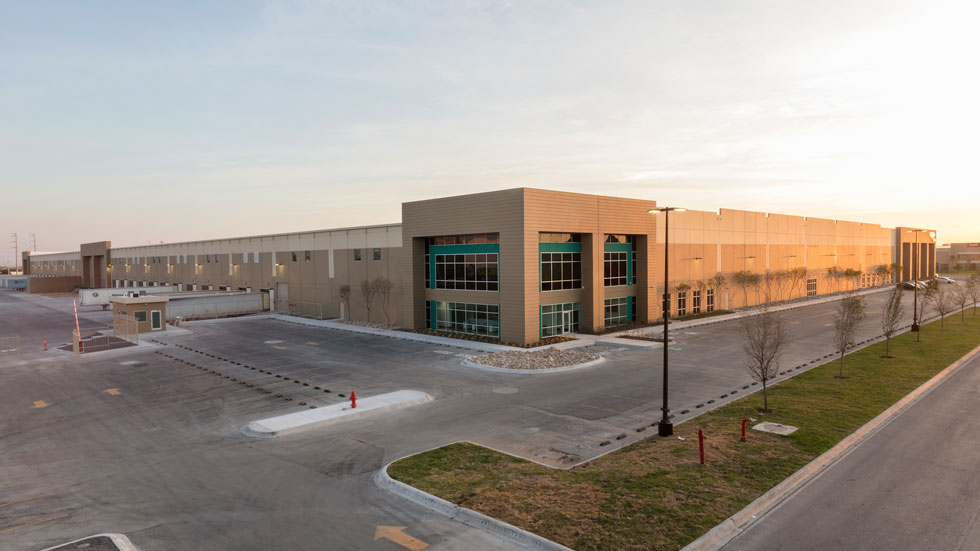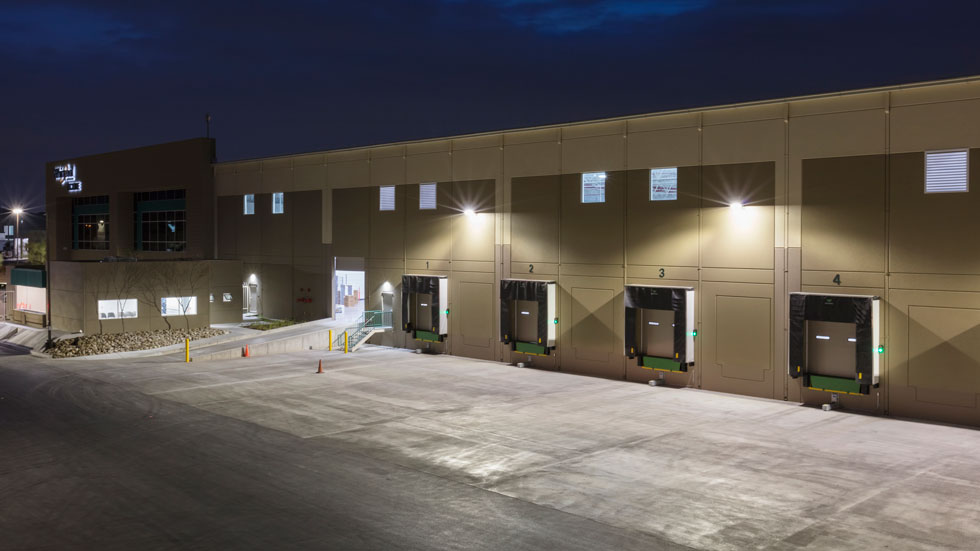Mexico City-based FIBRA Prologis (BMV: FIBRAPL 14), with its focus on acquiring, owning, and managing Class-A logistics and manufacturing facilities, has never experienced so much demand for space, as more global companies shift production closer to the United States.
Following supply chain disruptions fueled by the COVID-19 pandemic, many companies are moving operations from mainly Asia to Mexico. The strategy, called “nearshoring,” is taking off with increasing demand for warehouses and distribution centers in U.S.-Mexico border cities.
Nearshoring is a game changer for Mexico, says Luis Gutiérrez, CEO of FIBRA Prologis, which focuses on six key markets: Mexico City, Guadalajara, Monterrey, Reynosa, Tijuana, and Ciudad Juarez.
“Mexico has become a manufacturing powerhouse,” he says. “Many products are assembled in Mexico, taking advantage of the location near the U.S., and labor that’s abundant, well-trained, and very competitive in terms of pricing. Companies are capitalizing on that to export products, not only to the U.S., but around the world.”
With its 2,000-mile border with the U.S., Mexico also offers cheaper logistics, well-developed supply chains, and favorable trade agreements.
Nearshoring demand
Approximately 75% of 2022 demand was related to nearshoring, and the boom continues. The company’s portfolio is 98.1% leased, and net effective rents on rollover were up 30.9% in the second quarter.
“Never in my life have I seen so much demand, and I’ve been doing this for 35 years,” Gutiérrez says.
The automotive sector is the biggest driver for space. Mexico is the largest export market for U.S. automotive parts and the fourth-largest producer of automotive parts globally.
However, other industries are increasingly growing, including electronics and medical devices. FIBRA Prologis has a diverse customer base with more than 200 clients. Its top 10 customers—including companies in appliances, autos, logistics, and paper/packaging—represent 24.2% of net effective rents. Additionally, 87% are multinational companies.
Gutiérrez also says most leases are dollar-denominated, which “investors like because they don't have the currency risk.” Roughly 65% of the company’s revenues are in U.S. dollars, and 35% in Mexican pesos.
Unprecedented activity
Vacancy in Mexico’s top six markets fell to 1.1%, and rents soared by 16% -- the highest rent growth in 10 years, according to a June report by Prologis, Inc. (NYSE: PLD), the world’s largest logistics real estate company. Prologis is the parent company of FIBRA Prologis, owning 44% of the REIT.
Prologis forecasts another double-digit rent increase this year. Additionally, much of the industrial space underway is already pre-leased.
Demand for space is focused on the U.S.-Mexico border in cities like Reynosa, Ciudad Juarez, and Tijuana, and big cities like Mexico City and Monterrey, with their larger populations and access to labor.
“Monterrey demand has tripled pre-pandemic levels, and Tijuana and Ciudad Juarez have doubled pre-pandemic levels,” Gutiérrez says. “Many companies are becoming more competitive by manufacturing in Mexico, and our footprint is well-suited to accommodate their needs.” The portfolio consists of 228 facilities totaling 44.2 million square feet. Roughly 80% are in master-planned industrial parks.
Its success has not gone unnoticed. Morgan Stanley raised the recommendation on FIBRA Prologis to “overweight,” while Scotiabank Mexico gives it an “overperform” rating.
“FIBRA (Prologis) is one of two companies that we see in Mexico as the real winners of the structural drivers for nearshoring,” says Francisco Suárez, director, Global Equity Research at Scotiabank Mexico.
Border towns
FIBRA Prologis’ border markets in Ciudad Juarez, Reynosa, and Tijuana have nearly reached capacity, and it has wait-listed companies seeking to expand or enter the market.
Its strategy is to purchase stabilized, state-of-the-art buildings that are 95% leased. The company has a right of first refusal on Prologis-developed properties in Mexico and the ability to acquire properties from third parties.
FIBRA Prologis raised $400 million in a follow-on offering in May. “There was a lot of interest from foreign investors looking to invest in emerging markets,” Gutiérrez notes. “Nearshoring is very much on investors’ minds.”
Suárez concurs. He recently participated in two equity follow-ons, including one for FIBRA Prologis.
“I’ve never seen so much interest since covering this asset class, and from people that have never been investors in Mexico,” Suárez says. “All of a sudden, many global real estate specialists want to invest in structural trends, and clearly, nearshoring is attractive. They understand the overall advantages that Mexico has in terms of not only proximity, but the economies of scale developed by many industrial clusters over decades.”
Meanwhile, Prologis will invest in undeveloped land in Mexico in 2023, taking on the risk of developing and leasing the properties. Prologis broke ground on a record 4 million square feet in Mexico in 2022.
Ongoing demand
Morgan Stanley estimates that Mexico will need approximately 140 million square feet of new inventory over the next five years due to nearshoring.
“There’s almost no availability of industrial real estate in Mexico,” says Morgan Stanley research equity analyst Nikolaj Lippmann.
That’s driving rents and revenue. “The average lease spread has risen by approximately 40% for FIBRA Prologis,” Lippmann says. “We have also seen leading companies in the space raise capital,” he continues. “This is a surprise to many given the recent rise in interest rates.”
Lippmann says FIBRA Prologis has raised equity capital in 2023 and has a strong balance sheet for future growth. “FIBRA Prologis is well-positioned for two key secular trends affecting Mexico: nearshoring and digitalization,” he says.
E-commerce is the other main driver of the company’s demand, with mega-tenants including Amazon, Mercado Libre Inc., and Walmart.
E-commerce as a percentage of retail sales is roughly 13% in Mexico, and “we believe this could get much higher,” Gutiérrez says. “What we saw in the U.S. in terms of infill demand and last mile are just beginning to happen in this market, so we’re very bullish about e-commerce.”
Advantages of parent company Prologis
Prologis is a market leader in the U.S. and a step ahead of many key trends, which benefits FIBRA Prologis, Lippmann points out. For example, FIBRA Prologis insisted on a more modern, taller product for distribution, despite higher development costs.
“Initially, there was little differentiation in terms of rents, and investors would question the more expensive product produced by FIBRA Prologis. Today, not so much,” Lippmann says. “As the market has evolved towards more sophisticated distribution models, we can now see differentiation on the rent side and much higher leasing spreads for FIBRA Prologis.”
As a result, FIBRA Prologis is now valued at about 30% higher per square foot than its peers, Lippmann says.
Additional benefits
Gutiérrez says having the largest logistics REIT in the world as your sponsor has major advantages including scale, global customer access, data analytics, and banking relationships.
Also following Prologis’ lead, FIBRA Prologis has addressed environmental, social, and corporate governance (ESG), which is increasingly important to REIT investors. For example, FIBRA Prologis mirrors the objectives of Prologis to be net-zero by 2040.
“We’re certifying all of our buildings and putting solar panels in to offer clean energy for our customers because they also have net zero goals,” Gutiérrez notes.
That’s significant, says Suárez, who points to Mexico’s inconsistent energy policies with its major trading partners as well as water stress in Mexico’s regions that benefit the most from nearshoring.
“Developing buildings that are less energy, carbon, water, and waste-intensive is a solution to the Achilles heel we see to an otherwise good story as it relates to nearshoring,” Suárez says.
Additionally, on the governance side, FIBRA Prologis has outperformed, Gutiérrez says. “When you look at the financial performance, our total return is one of the highest in the sector. One of the things that investors look at is governance, and certainly, transparency and planning around governance.”
Part of that governance platform is Prologis’ succession planning process in which Gutiérrez will move to senior advisor on Jan. 1, 2024, and Héctor Ibarzábal, managing director and COO, will become CEO. Gutiérrez will remain chair of the technical committee.
“I've been doing this since 1988,” Gutiérrez says. “I was originally a partner of AMB Property Corp., and when Prologis bought our company, we became integrated, and I led Latin America.”
A standout memory for Gutiérrez is when FIBRA Prologis was spun out in an IPO in 2014. “We have had great performance in terms of returns for investors, an outstanding portfolio, and a great path forward, so I’m very proud of what we’ve built,” he says. “Now bringing in fresh blood is what we need to do, and we're excited about the future and the new leadership.”
Future challenges
The nearshoring impact could be significantly greater if not for the lack of electricity and water in some Mexican markets, says Gutiérrez.
“The country can take greater advantage of the nearshoring demand if we become well-prepared,” Gutiérrez explains. “The main challenge is infrastructure, including energy. Today, the investment in transmission from the government has been low, and obtaining land with energy is a challenge. Our job is to try and promote that investment by working with the government.”
There are also geopolitical issues. “Mexico is full of things that we can't control,” Gutiérrez says. “We have all the political movements, including elections in the U.S. and Mexico in 2024. There's going to be a new administration in Mexico, and that brings changes to the business environment, which is something that you must be very aware of in an emerging market.”
Despite challenges, Gutiérrez says 2023 will be an outstanding year. “The cycle will be in an uptrend next year, and I feel very good about the company,” he adds. “We will have good prospects to continue our path forward. Also, there’s capital available, even in this very volatile environment of higher interest rates. We just need to take advantage of all these trends.”
- FIBRA Day 2023
-
Register for FIBRA Day 2023 on Sept. 7 in New York City, hosted by AMEFIBRA, the Mexican Association of Real Estate FIBRAs (REITs).


